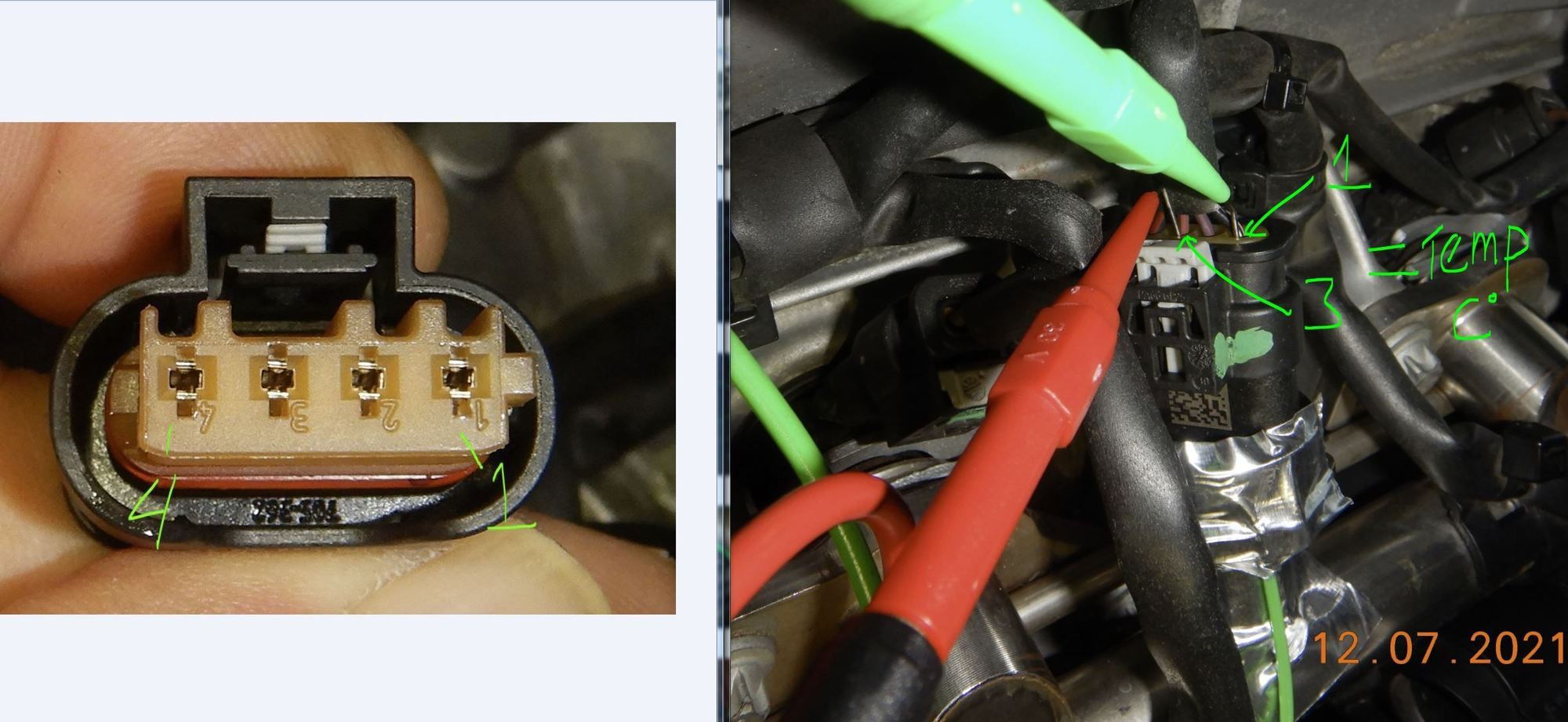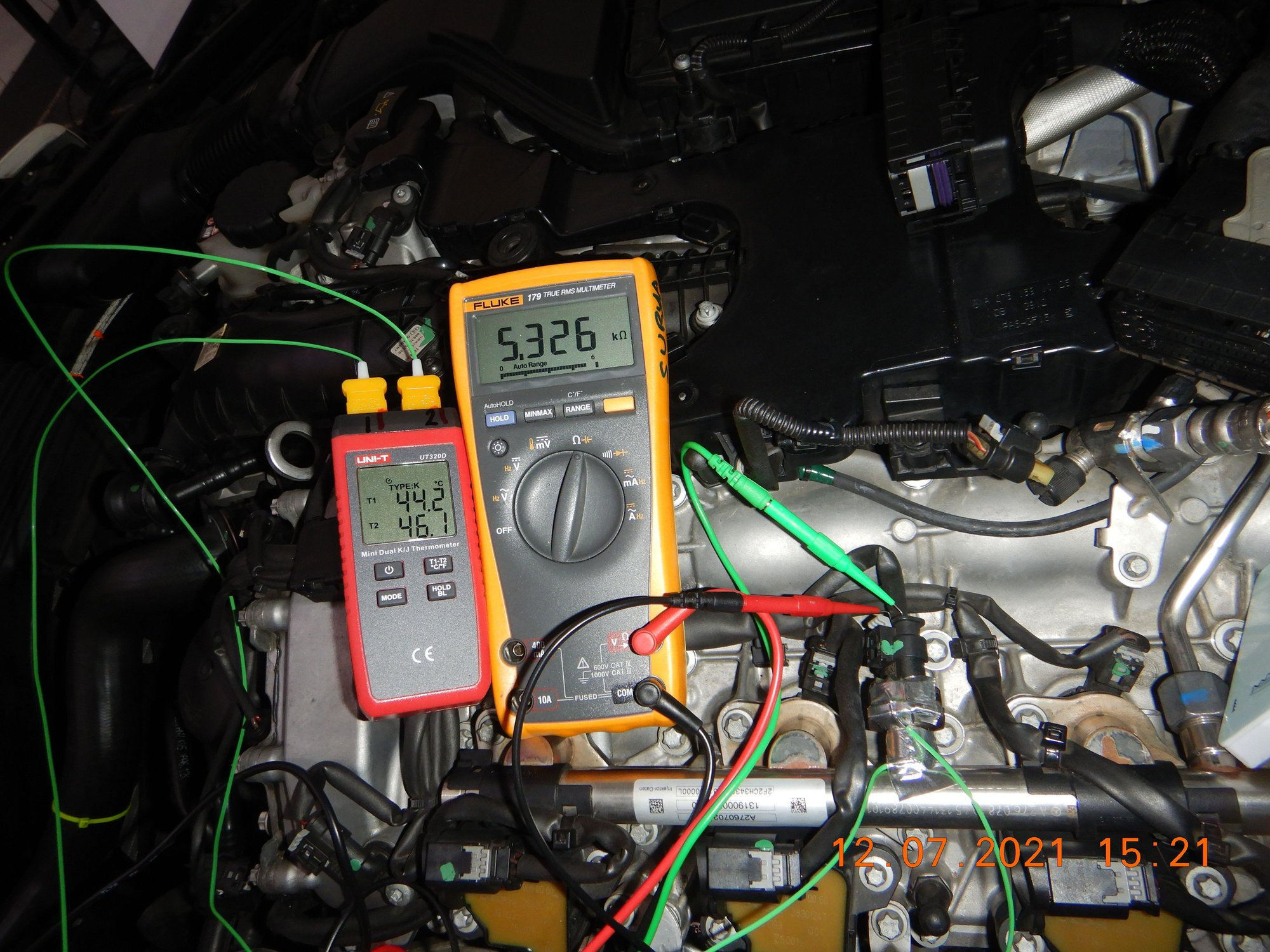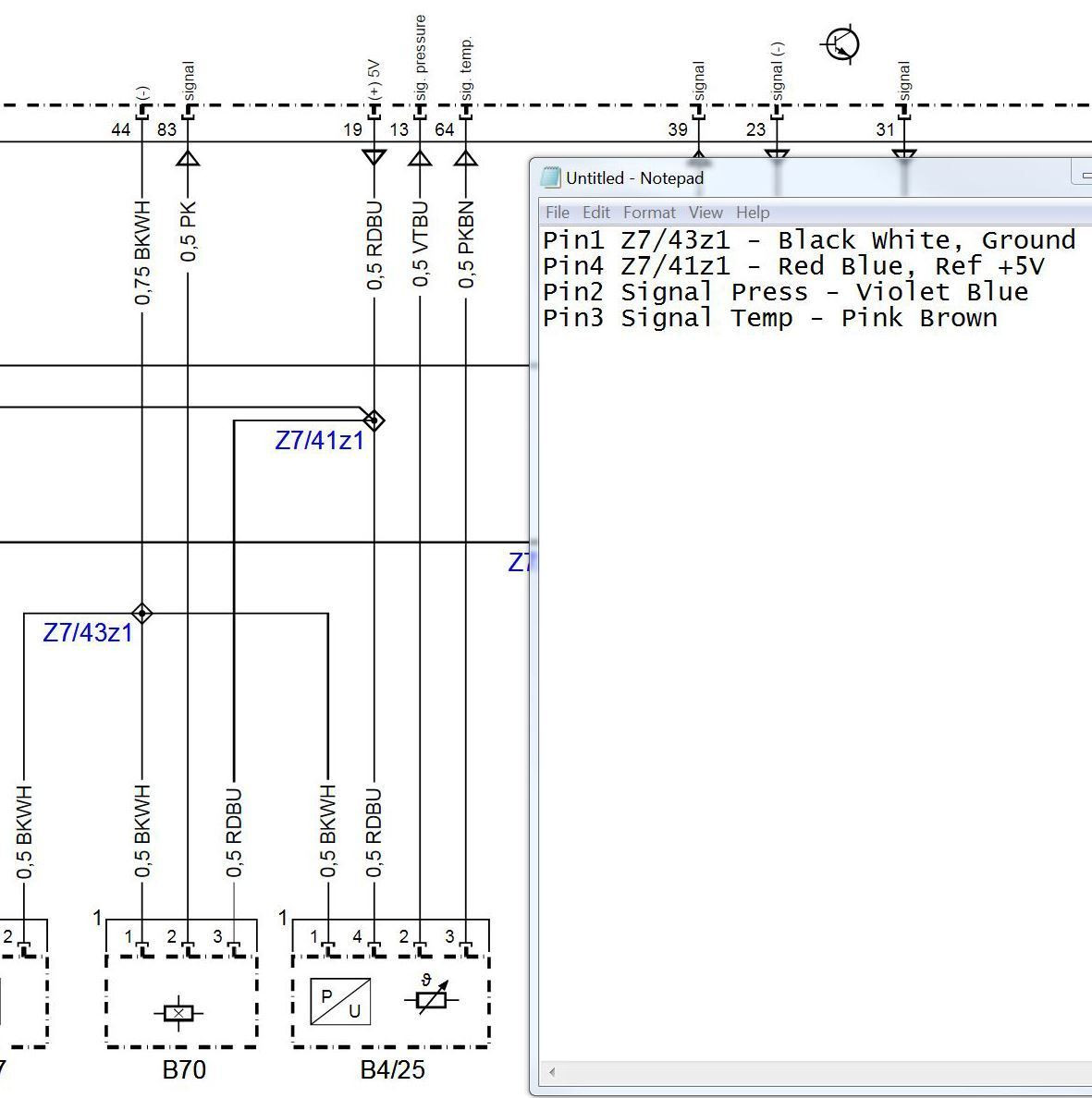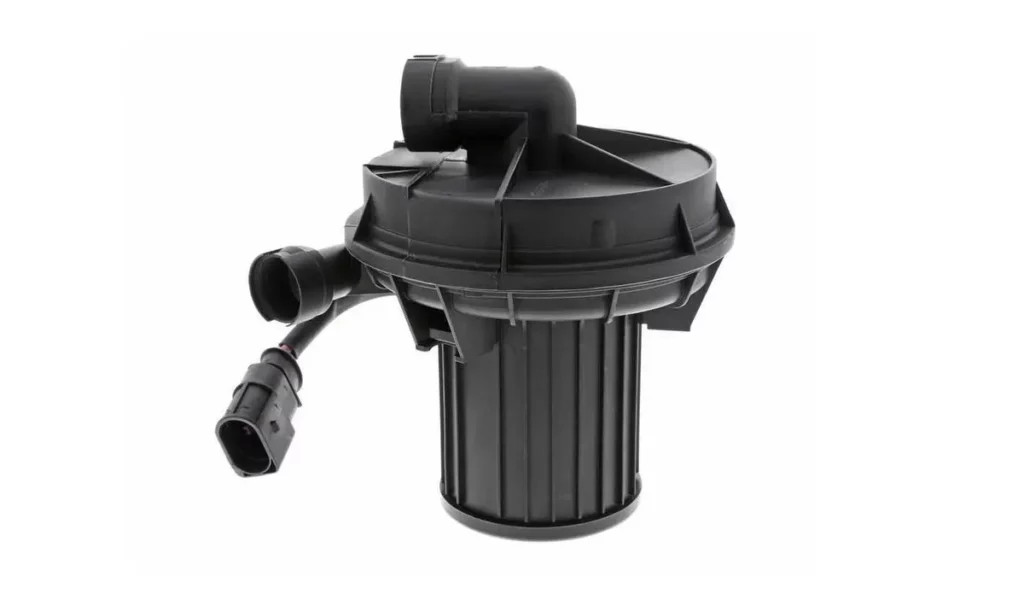Mercedes-Benz DTC P008700: Fuel Rail/System Pressure Too Low

Mercedes-Benz DTC P008700 indicates a “Fuel Rail/System Pressure – Too Low” condition. This article from CARDIAGTECH.NET dives deep into the causes, symptoms, diagnostic procedures, and repair solutions for this trouble code.
Table of Contents
- Understanding Mercedes-Benz DTC P008700
- Symptoms of a P008700 Code
- Potential Causes of P008700 in Mercedes-Benz Vehicles
- Diagnosing the P008700 Code: A Step-by-Step Guide
- 4.1 Tools You’ll Need
- 4.2 Step 1: Scan the OBD-II System
- 4.3 Step 2: Check Fuel Pressure
- 4.4 Step 3: Inspect the Fuel Filter
- 4.5 Step 4: Evaluate the Fuel Pump
- 4.6 Step 5: Examine Fuel Injectors
- 4.7 Step 6: Check the Fuel Pressure Regulator
- 4.8 Step 7: Assess the Fuel Rail Pressure Sensor
- 4.9 Step 8: Review Wiring and Connections
- 4.10 Step 9: Consider Advanced Diagnostics
- Repairing the P008700 Code: Solutions and Procedures
- Advanced Diagnostic Techniques for P008700
- Preventive Maintenance to Avoid P008700
- Tools and Equipment from CARDIAGTECH.NET
- Cost Considerations for Repairing P008700
- FAQ: Addressing Common Questions About P008700
- Act Now and Ensure Optimal Fuel System Performance
1. Understanding Mercedes-Benz DTC P008700
Mercedes-Benz Diagnostic Trouble Code P008700 signifies that the fuel rail pressure in your vehicle’s fuel system is lower than expected. This low fuel pressure condition can trigger a range of performance issues. Let’s break down what this code means and why it’s crucial to address it promptly.
1.1 What Does P008700 Really Mean?
The diagnostic code P008700, specific to Mercedes-Benz vehicles, indicates that the Engine Control Unit (ECU) has detected insufficient fuel pressure in the fuel rail. The fuel rail is a critical component that distributes fuel to the injectors. When the pressure drops below a specified threshold, the ECU registers the P008700 code, potentially activating the check engine light and initiating fail-safe measures to protect the engine.
1.2 The Crucial Role of Fuel Pressure
Maintaining adequate fuel pressure is vital for optimal engine performance. Proper fuel pressure ensures that the fuel injectors can deliver the correct amount of fuel needed for combustion. Insufficient fuel pressure can result in:
- Reduced engine power
- Poor fuel economy
- Engine misfires
- Difficulty starting the engine
- Potential damage to engine components
According to a study by the University of Michigan, maintaining optimal fuel pressure can improve fuel efficiency by up to 5%.
1.3 OBD-II and Mercedes-Specific Codes
The P0087 code is a generic OBD-II (On-Board Diagnostics II) code, which means it applies to all vehicles equipped with OBD-II systems, including Mercedes-Benz. However, the “00” suffix in P008700 can indicate a Mercedes-specific variation or additional details related to the issue. When diagnosing Mercedes-Benz vehicles, it’s essential to use scan tools that can read Mercedes-specific codes for more accurate troubleshooting.
2. Symptoms of a P008700 Code
Recognizing the symptoms associated with the P008700 code is essential for early detection and repair. Here are the common signs that your Mercedes-Benz may have fuel pressure issues:
2.1 Common Signs Your Mercedes Has Fuel Pressure Issues
When the P008700 code appears, various symptoms can manifest, affecting your vehicle’s performance and drivability. Identifying these symptoms promptly is crucial for diagnosing and resolving the underlying issue. Here are some common signs to watch out for:
2.2 Performance Problems
- Reduced Engine Power: The engine may feel sluggish or less responsive than usual, particularly during acceleration.
- Poor Acceleration: The vehicle may struggle to accelerate, especially when climbing hills or carrying heavy loads.
- Engine Misfires: Misfires can occur due to insufficient fuel delivery, leading to rough idling and reduced power.
2.3 Starting Difficulties
- Hard Starting: The engine may take longer to start than usual, requiring multiple attempts.
- No Start Condition: In severe cases, the engine may fail to start altogether due to the lack of fuel pressure.
2.4 Engine Stalling
- Stalling at Idle: The engine may stall when idling, especially after coming to a stop.
- Stalling During Acceleration: The engine may stall during acceleration or when under load.
2.5 Check Engine Light
- Illuminated Check Engine Light: The check engine light will typically illuminate on the dashboard, indicating a problem within the engine management system.
- Stored Diagnostic Trouble Code: The P008700 code will be stored in the ECU, which can be retrieved using an OBD-II scanner.
3. Potential Causes of P008700 in Mercedes-Benz Vehicles
The P008700 code can stem from various issues within the fuel delivery system. Identifying the root cause is crucial for effective repair. Let’s explore the potential causes in detail:
3.1 Fuel Delivery System Components
The fuel delivery system in a Mercedes-Benz is a complex network of components working together to supply fuel to the engine. Key components include:
- Fuel Tank
- Fuel Pump
- Fuel Filter
- Fuel Lines
- Fuel Rail
- Fuel Injectors
- Fuel Pressure Regulator
- Fuel Rail Pressure Sensor
A malfunction in any of these components can lead to the P008700 code.
3.2 Low Fuel Pressure
At its core, the P008700 code indicates that the fuel pressure in the system is too low. This can be due to:
- A failing fuel pump that cannot maintain adequate pressure.
- A clogged fuel filter restricting fuel flow.
- A faulty fuel pressure regulator unable to control pressure properly.
- Fuel leaks in the system, causing a pressure drop.
3.3 Common Culprits
Several common issues can trigger the P008700 code in Mercedes-Benz vehicles. These include:
- Failing fuel pump
- Clogged fuel filter
- Faulty fuel pressure regulator
- Defective fuel injectors
- Malfunctioning fuel rail pressure sensor
- Fuel leaks
3.4 Fuel Pump Issues
The fuel pump is responsible for delivering fuel from the tank to the engine. Common fuel pump problems include:
- Worn Pump Motor: Over time, the fuel pump motor can wear out, reducing its ability to generate sufficient pressure.
- Electrical Problems: Issues with the fuel pump’s wiring, relay, or control module can cause it to malfunction.
- Contamination: Debris and contaminants in the fuel tank can damage the fuel pump, reducing its efficiency.
The National Highway Traffic Safety Administration (NHTSA) has reported numerous cases of fuel pump failures leading to performance issues.
3.5 Fuel Filter Clogging
The fuel filter prevents contaminants from reaching the fuel injectors. A clogged fuel filter can restrict fuel flow, leading to low fuel pressure. Causes of fuel filter clogging include:
- Accumulation of Debris: Over time, the fuel filter can accumulate dirt, rust, and other debris from the fuel tank.
- Poor Fuel Quality: Using low-quality fuel can accelerate the clogging process.
- Infrequent Replacement: Failing to replace the fuel filter at recommended intervals can lead to severe clogging.
3.6 Fuel Injector Problems
Fuel injectors spray fuel into the engine’s cylinders. Issues with fuel injectors can cause low fuel pressure. Common problems include:
- Clogged Injectors: Deposits and contaminants can clog the fuel injectors, reducing their ability to deliver fuel.
- Leaking Injectors: Leaking injectors can cause a drop in fuel pressure.
- Faulty Injectors: Electrical or mechanical issues can cause fuel injectors to malfunction.
3.7 Fuel Pressure Regulator Malfunctions
The fuel pressure regulator maintains consistent fuel pressure in the fuel rail. If the regulator fails, it can cause:
- Inconsistent Pressure: The fuel pressure may fluctuate, leading to performance issues.
- Low Pressure: The regulator may fail to maintain adequate pressure, triggering the P008700 code.
- High Pressure: In some cases, the regulator may cause excessively high fuel pressure, which can also cause problems.
3.8 Sensor Problems
The fuel rail pressure sensor monitors the fuel pressure in the rail and sends data to the ECU. A faulty sensor can provide inaccurate readings, leading to the P008700 code. Common sensor issues include:
- Electrical Malfunctions: The sensor may suffer from internal electrical failures.
- Contamination: Debris or contaminants can affect the sensor’s accuracy.
- Wiring Issues: Damaged or corroded wiring can disrupt the sensor’s signal.
 Fuel Rail Pressure Sensor
Fuel Rail Pressure Sensor
3.9 Wiring and Electrical Issues
Wiring and electrical problems can also lead to the P008700 code. These include:
- Damaged Wiring: Wires can become damaged due to heat, friction, or corrosion.
- Loose Connections: Loose or corroded connections can disrupt the flow of electricity.
- Faulty Relays: Relays that control the fuel pump or other components can fail.
3.10 Other Potential Causes
In addition to the above, other potential causes of the P008700 code include:
- Fuel Leaks: Leaks in the fuel lines, fuel rail, or fuel injectors can cause a drop in fuel pressure.
- Low Fuel Level: In some cases, a low fuel level can cause the fuel pump to struggle, leading to low fuel pressure.
- ECU Malfunctions: Although rare, a malfunctioning ECU can cause the P008700 code to appear.
4. Diagnosing the P008700 Code: A Step-by-Step Guide
Diagnosing the P008700 code requires a systematic approach to identify the root cause of the problem. Here’s a step-by-step guide to help you diagnose the issue:
4.1 Tools You’ll Need
Before you begin, gather the necessary tools and equipment. Essential items include:
- OBD-II Scanner
- Fuel Pressure Tester
- Multimeter
- Basic Hand Tools (wrenches, screwdrivers, pliers)
- Safety Glasses
- Gloves
4.2 Step 1: Scan the OBD-II System
Connect an OBD-II scanner to the vehicle’s diagnostic port and retrieve any stored trouble codes. Record all codes and their descriptions. Pay close attention to the P008700 code and any related codes. Clear the codes and take the vehicle for a test drive to see if the P008700 code returns.
4.3 Step 2: Check Fuel Pressure
Use a fuel pressure tester to measure the fuel pressure at the fuel rail. Compare the reading to the manufacturer’s specifications. Low fuel pressure confirms the issue indicated by the P008700 code. The fuel pressure specification for most Mercedes-Benz models typically ranges from 50 to 60 PSI.
4.4 Step 3: Inspect the Fuel Filter
Locate the fuel filter and inspect it for signs of clogging or damage. If the filter appears dirty or restricted, replace it with a new one. After replacing the fuel filter, recheck the fuel pressure to see if it has improved.
 Clogged Fuel Filter
Clogged Fuel Filter
4.5 Step 4: Evaluate the Fuel Pump
If the fuel pressure is still low after replacing the fuel filter, the fuel pump may be the problem. To evaluate the fuel pump:
- Listen to the Fuel Pump: Turn the ignition key to the “ON” position and listen for the fuel pump to prime. If you don’t hear the pump running, it may be faulty.
- Check Fuel Pump Voltage: Use a multimeter to check the voltage at the fuel pump connector. Ensure that the pump is receiving the correct voltage.
- Perform a Fuel Pump Pressure Test: Use a fuel pressure tester to measure the fuel pump’s output pressure. If the pressure is below the manufacturer’s specifications, the fuel pump may need to be replaced.
4.6 Step 5: Examine Fuel Injectors
Inspect the fuel injectors for signs of clogging or damage. You can use a fuel injector cleaning kit to clean the injectors. If cleaning doesn’t improve their performance, they may need to be replaced.
4.7 Step 6: Check the Fuel Pressure Regulator
Inspect the fuel pressure regulator for signs of damage or leaks. Use a fuel pressure tester to check the fuel pressure with the regulator connected and disconnected. If the pressure changes significantly, the regulator may be faulty.
4.8 Step 7: Assess the Fuel Rail Pressure Sensor
Use a scan tool to monitor the fuel rail pressure sensor’s readings. Compare the readings to the actual fuel pressure using a mechanical gauge. If the sensor readings are inaccurate, replace the fuel rail pressure sensor.
4.9 Step 8: Review Wiring and Connections
Inspect the wiring and connections related to the fuel pump, fuel injectors, fuel pressure regulator, and fuel rail pressure sensor. Look for damaged wires, loose connections, and corrosion. Repair or replace any damaged wiring or connectors.
4.10 Step 9: Consider Advanced Diagnostics
If you’ve performed the above steps and are still unable to identify the cause of the P008700 code, consider seeking advanced diagnostic assistance from a qualified technician. Advanced diagnostics may involve using specialized tools and techniques to further evaluate the fuel system.
5. Repairing the P008700 Code: Solutions and Procedures
Once you’ve diagnosed the cause of the P008700 code, you can proceed with the necessary repairs. Here are the common solutions and procedures for addressing the issue:
5.1 Addressing the Root Cause
It’s essential to address the root cause of the P008700 code to prevent it from recurring. Simply clearing the code without fixing the underlying problem will only provide a temporary solution.
5.2 Fuel Filter Replacement
If a clogged fuel filter is the cause of the P008700 code, replace it with a new, high-quality fuel filter. Follow these steps:
- Relieve the fuel pressure.
- Disconnect the fuel lines from the fuel filter.
- Remove the old fuel filter.
- Install the new fuel filter, ensuring it is properly oriented.
- Reconnect the fuel lines.
- Check for leaks.
5.3 Fuel Pump Replacement
If the fuel pump is faulty, replace it with a new fuel pump. Follow these steps:
- Relieve the fuel pressure.
- Drain the fuel tank.
- Disconnect the fuel pump wiring and fuel lines.
- Remove the old fuel pump.
- Install the new fuel pump.
- Reconnect the fuel lines and wiring.
- Refill the fuel tank.
- Check for leaks.
5.4 Fuel Injector Servicing or Replacement
If the fuel injectors are clogged or faulty, you can either clean or replace them. To clean the fuel injectors, use a fuel injector cleaning kit. If cleaning doesn’t improve their performance, replace them with new fuel injectors.
5.5 Fuel Pressure Regulator Replacement
If the fuel pressure regulator is faulty, replace it with a new regulator. Follow these steps:
- Relieve the fuel pressure.
- Disconnect the vacuum line and fuel lines from the regulator.
- Remove the old regulator.
- Install the new regulator.
- Reconnect the fuel lines and vacuum line.
- Check for leaks.
5.6 Fuel Rail Pressure Sensor Replacement
If the fuel rail pressure sensor is faulty, replace it with a new sensor. Follow these steps:
- Disconnect the electrical connector from the sensor.
- Remove the old sensor.
- Install the new sensor.
- Reconnect the electrical connector.
5.7 Wiring and Connector Repairs
Repair any damaged wiring or connectors related to the fuel system components. Use electrical tape or heat shrink tubing to insulate repaired wires. Replace any corroded or damaged connectors.
 B4/25 Sensor Wiring
B4/25 Sensor Wiring
5.8 Clearing the Code and Testing
After completing the repairs, clear the P008700 code using an OBD-II scanner. Take the vehicle for a test drive to ensure that the code does not return and that the engine is running smoothly.
6. Advanced Diagnostic Techniques for P008700
In some cases, diagnosing the P008700 code may require advanced diagnostic techniques. Here are some methods to consider:
6.1 When to Seek Expert Help
If you’re not comfortable performing the diagnostic and repair procedures outlined above, or if you’ve tried the basic steps and are still unable to resolve the issue, it’s best to seek help from a qualified technician.
6.2 Using a Scan Tool for Live Data
Use a scan tool to monitor live data from the fuel system, including fuel pressure, fuel pump duty cycle, and fuel injector pulse width. This can provide valuable insights into the performance of the fuel system components.
6.3 Fuel System Leak Testing
Perform a fuel system leak test to check for leaks in the fuel lines, fuel rail, and fuel injectors. You can use a fuel system leak detector or a soap-and-water solution to identify leaks.
6.4 Checking for Restrictions
Check for restrictions in the fuel lines and fuel tank vent. A clogged fuel line or a blocked fuel tank vent can cause low fuel pressure.
7. Preventive Maintenance to Avoid P008700
Preventive maintenance is essential for avoiding the P008700 code and other fuel system problems. Here are some tips to keep your Mercedes-Benz running smoothly:
7.1 Regular Fuel System Service
Follow the manufacturer’s recommended maintenance schedule for fuel system service. This includes replacing the fuel filter at the specified intervals and inspecting the fuel lines and connections for leaks or damage.
7.2 Using Quality Fuel
Use high-quality fuel from reputable sources. Avoid using fuel that may be contaminated with dirt, water, or other debris.
7.3 Monitoring Fuel System Health
Pay attention to any changes in your vehicle’s performance, such as reduced power, poor acceleration, or hard starting. These symptoms may indicate a problem with the fuel system.
8. Tools and Equipment from CARDIAGTECH.NET
CARDIAGTECH.NET offers a range of tools and equipment to help you diagnose and repair fuel system problems, including the P008700 code.
8.1 Essential Diagnostic Tools
- OBD-II Scanners: Retrieve and clear diagnostic trouble codes.
- Multimeters: Measure voltage, resistance, and current in electrical circuits.
- Fuel Pressure Testers: Measure fuel pressure at the fuel rail.
8.2 Fuel System Testing Kits
- Fuel Injector Cleaning Kits: Clean clogged fuel injectors.
- Fuel System Leak Detectors: Identify leaks in the fuel system.
8.3 Why Choose CARDIAGTECH.NET?
CARDIAGTECH.NET provides high-quality tools and equipment at competitive prices. Our products are designed to help you diagnose and repair automotive problems quickly and efficiently. Contact us at +1 (641) 206-8880 or visit our website CARDIAGTECH.NET for more information. Our address is 276 Reock St, City of Orange, NJ 07050, United States.
9. Cost Considerations for Repairing P008700
The cost of repairing the P008700 code can vary depending on the cause of the problem and whether you choose to perform the repairs yourself or hire a professional technician.
9.1 Estimating Repair Costs
- Fuel Filter Replacement: $30 – $100
- Fuel Pump Replacement: $200 – $800
- Fuel Injector Servicing or Replacement: $100 – $600
- Fuel Pressure Regulator Replacement: $50 – $300
- Fuel Rail Pressure Sensor Replacement: $50 – $200
- Wiring and Connector Repairs: $50 – $200
These are estimated costs and may vary based on your location and the specific make and model of your vehicle.
9.2 DIY vs. Professional Repair
Performing the repairs yourself can save you money on labor costs. However, it requires mechanical skills, tools, and equipment. If you’re not comfortable performing the repairs yourself, it’s best to hire a professional technician.
9.3 Long-Term Savings
Addressing the P008700 code promptly can prevent further damage to your vehicle and save you money on costly repairs in the future. Regular maintenance and timely repairs can extend the life of your vehicle and improve its performance.
10. FAQ: Addressing Common Questions About P008700
Q: What does the P008700 code mean on a Mercedes-Benz?
A: The P008700 code indicates that the fuel rail pressure in your Mercedes-Benz is lower than expected.
Q: What are the common symptoms of the P008700 code?
A: Common symptoms include reduced engine power, poor acceleration, hard starting, engine stalling, and an illuminated check engine light.
Q: What are the potential causes of the P008700 code?
A: Potential causes include a failing fuel pump, clogged fuel filter, faulty fuel pressure regulator, defective fuel injectors, malfunctioning fuel rail pressure sensor, and fuel leaks.
Q: How can I diagnose the P008700 code?
A: You can diagnose the P008700 code by using an OBD-II scanner, checking fuel pressure, inspecting the fuel filter, evaluating the fuel pump, examining fuel injectors, checking the fuel pressure regulator, and assessing the fuel rail pressure sensor.
Q: Can I repair the P008700 code myself?
A: Whether you can repair the P008700 code yourself depends on your mechanical skills and access to tools and equipment. If you’re not comfortable performing the repairs yourself, it’s best to hire a professional technician.
Q: How much does it cost to repair the P008700 code?
A: The cost of repairing the P008700 code can vary depending on the cause of the problem and whether you choose to perform the repairs yourself or hire a professional technician. Estimated costs for common repairs are listed above.
Q: How often should I replace my fuel filter?
A: You should replace your fuel filter according to the manufacturer’s recommended maintenance schedule, typically every 20,000 to 30,000 miles.
Q: Can using low-quality fuel cause the P008700 code?
A: Yes, using low-quality fuel can accelerate the clogging of the fuel filter and damage the fuel pump, leading to the P008700 code.
Q: Is it safe to drive with the P008700 code?
A: Driving with the P008700 code can cause further damage to your vehicle. It’s best to diagnose and repair the problem as soon as possible.
Q: Where can I find high-quality tools and equipment for diagnosing and repairing fuel system problems?
A: You can find high-quality tools and equipment at CARDIAGTECH.NET. Contact us at +1 (641) 206-8880 or visit our website CARDIAGTECH.NET for more information.
11. Act Now and Ensure Optimal Fuel System Performance
Don’t let the P008700 code compromise your Mercedes-Benz’s performance. Take action today to diagnose and repair the problem. CARDIAGTECH.NET is here to support you with top-quality tools, equipment, and expert advice. Contact us at +1 (641) 206-8880 or visit our website CARDIAGTECH.NET to explore our extensive range of products. Our address is 276 Reock St, City of Orange, NJ 07050, United States. Ensure your vehicle runs smoothly and efficiently by addressing fuel system issues promptly.




